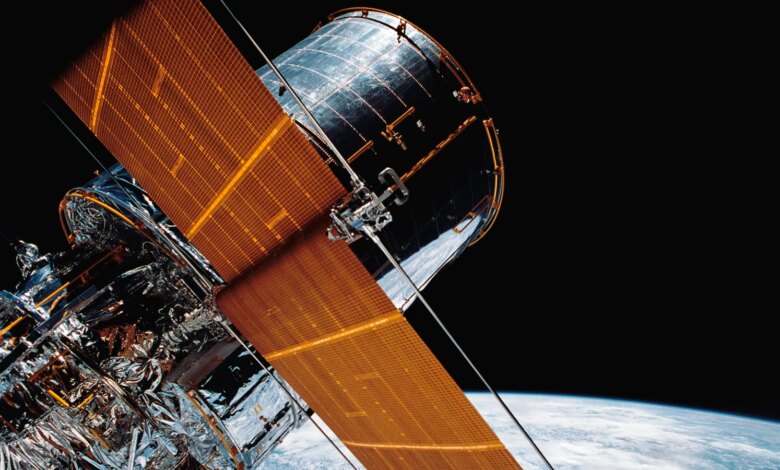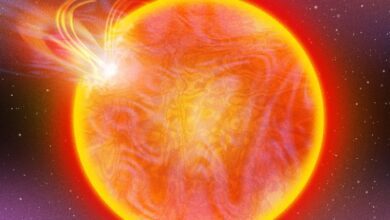Black Holes INCREDIBLE! The Hubble Space Telescope finds the unseen for the first time

A team using the Hubble Space Telescope seems to have found something no one has ever seen before: an invisible black hole.
Renowned astronomers captured the first direct image of a black hole in 2019, thanks to matter that glows in its presence. But many black holes are actually almost undetectable. Now, another team using NASA’s Hubble Space Telescope seems to have finally found what no one has seen before: a completely invisible black hole. The study, which has been posted online and submitted for publication in the Astrophysical Journal, has yet to be reviewed.
Black holes are what remains after massive stars die and their cores collapse. They are extremely dense, with gravity so strong that nothing can travel fast enough to escape them, not even light. Astronomers are very interested in studying black holes because they can tell us a lot about how stars die. By measuring the masses of black holes, we can learn about what’s going on in the final moments of stars, when their cores collapse and their outer layers are ejected. .
By definition, it seems that black holes are invisible – after all, they have become famous for their ability to trap light. But we can still detect them by how they interact with other objects thanks to their strong gravity. Hundreds of small black holes have been discovered by how they interact with other stars.
There are two different approaches to such detection. In an “X-ray binary” – in which a star and a black hole orbit around a common center while producing X-rays – the black hole’s gravitational field can pull matter away from its companion. Matter orbits the black hole, heating up due to friction as it does so. The hot matter glows brightly under X-ray light, making the black hole visible, before being sucked into the black hole and disappearing. You can also detect pairs of black holes as they merge, spiral inward and emit a brief jet of gravitational waves, which are ripples in spacetime.
However, there are many rogue black holes that are drifting through space without interacting with anything – making them difficult to detect. That’s a problem, because if we can’t detect isolated black holes, then we can’t learn about how they form and about the deaths of the stars they spawn.
New, dark horizons
To detect such an invisible black hole, the team of scientists had to combine two different types of observations over the years. This impressive achievement promises a new way to find the previously elusive class of isolated black holes.
Albert Einstein’s General Theory of Relativity predicted that massive objects would bend light as it passed through them. That means that any light that passes very close to an invisible black hole – but not close enough to end up inside it – will be bent in a similar way to light passing through a lens. This is called gravitational lensing and can be detected when a foreground object aligns with a background object, bending its light. This method has been used to study everything from galaxy clusters to planets around other stars.
The authors of this new study combined two types of gravitational lensing observations to search for black holes. It started with them discovering light from a distant star suddenly magnified, making it brighter for a short time before returning to normal. However, they were unable to see any foreground objects causing magnification through gravitational lensing. That suggests the object could be a lone black hole, something that has never been seen before. The problem is that it could also just be a faint star.
Figuring out whether it’s a black hole or a faint star takes a lot of work, and that’s where the second kind of gravitational lensing observation comes in. The authors continuously took pictures with Hubble for six years, measuring how much the star moves because its light is deflected.
Ultimately, this allowed them to calculate the mass and distance of the object causing the lensing effect. They discovered that it is seven times the mass of our Sun, located about 5,000 light-years away, which sounds far away but is actually relatively close. A star of the same size and close to that will be shown to us. Since we couldn’t see it, they concluded it must be an isolated black hole.
Making so many observations with an observatory like Hubble is no easy feat. The telescope was very popular and had a lot of competition for its time. And given the difficulty of validating an object like this, you might think that the prospects for finding more of them are not great. Fortunately, we are starting a revolution in astronomy. This is thanks to a new generation of facilities, including the ongoing Gaia survey, the Vera Rubin Observatory and the upcoming Nancy Grace Roman Space Telescope, all of which will take measurements. repeat large portions of the sky with unprecedented detail.
That would be huge for all fields of astronomy. Having frequent, highly accurate measurements of a lot of the sky will allow us to investigate a wide range of things that change over very short periods of time. We’ll be studying things as diverse as asteroids, exploding stars known as supernovas, and planets around other stars in new ways.
When it comes to finding invisible black holes, that means that instead of celebrating finding just one, we could soon find a lot of black holes becoming the norm. That would allow us to fill in the gaps in our understanding of the death of stars and the creation of black holes.
Finally, the invisible black holes of the galaxy that are about to find it are much harder to hide.
(Conversation. By Adam McMaster, Postgraduate Fellow (PhD) in Astronomy, Open University & Andrew Norton, Director of Astrophysics Education, Open University)




